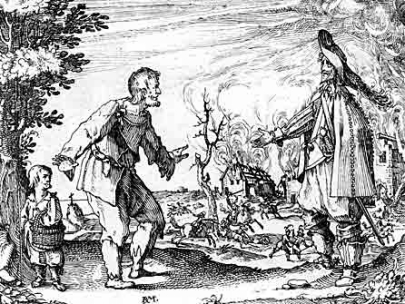Agriculture
The effects of the war on agriculture were felt in different places and different times. Germany and the United Provinces experienced price rises in the 1630s while Austria, England and the Spanish Netherlands did so in the 1640s. However, it is difficult to establish whether price rises were caused solely by the war, or whether crop producers used the the opportunity to increase prices, knowing full well that food was vital for sustaining an army.
Figures for crop production are very difficult to acquire. Europe experienced price fluctuations in times of peace let alone in the dislocation caused by war.

But did the war introduce an new era of serfdom?
The war also saw a change in the relationship between peasant and landowner. Historians have suggested that the Thirty Years War did not create new types of social change, but rather it accelerated and aggravated changes that were already discernible before the war.
In general, a distinction may be drawn between northeastern, southern, and western Germany. The peasants in the west and south gained more freedoms, while those in the northeast were reduced to serfdom.
The south had suffered a huge loss of manpower, which made the peasants who were left even more valuable. This gave them a stronger hand to negotiate better terms for themselves in the form of lightened dues and lower rents.
In contrast, in the north the peasants lost grounds. In Brandenburg, Pomerania, and Mecklenburg, the nobles were supported by the Elector in their move demand more work from peasants. These demands were enforced by law and force, turning the once-free peasants into serfs.
See also: Population and the Thirty Years War
MLA Citation/Reference
"Agriculture". HistoryLearning.com. 2025. Web.
